Mission Tables aren’t returning in Dragonflight. Here’s a brief history of the feature
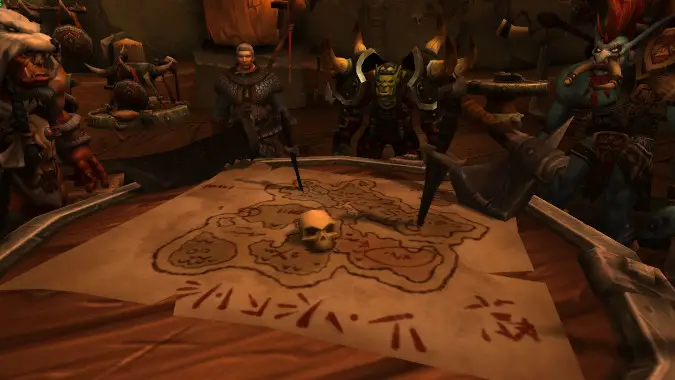
In recent interviews regarding the next expansion to World of Warcraft, Dragonflight, Ion Hazzikostas confirmed that there would be no new version of the Mission Table. Through several expansions, this feature has served as a passive way for players to earn gold, resources, gear, and even a way to interact with World of Warcraft through mobile devices rather than logging in on a PC. Some have reported making enough gold through this method to buy tokens to pay for their subscription without having to pay money or farm in game.
Like it, love it, or hate it, this feature of the game for the last four expansions won’t have a new, updated version in Dragonflight.
But where did the Mission Table feature begin? How has it changed? Let’s take a look back at how they’ve changed over the years — for better or worse.
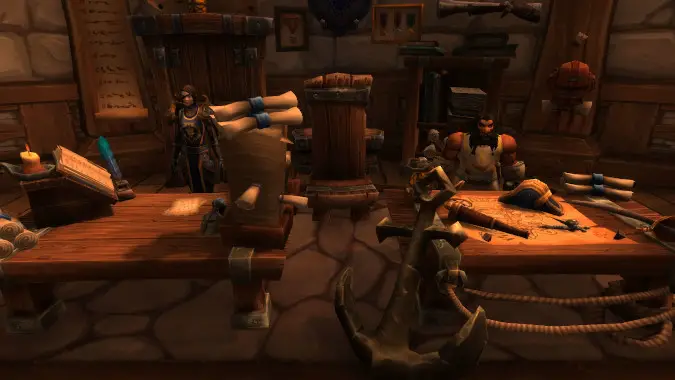
The original Garrison Mission Table from Warlords of Draenor
Name: Mission Table
Location: Garrison Town Hall, garrison outposts in each zone, follower Leorajh’s perk Windspeaker
Resource Used: Garrison Resources
Number of Followers: 280 — 36 from zones, 243 from the inn, one legendary, with some overlap per faction
At the beginning of Warlords of Draenor, Garrisons were all the rage. Open it up, choose your buildings, start your missions, and begin building up your Garrison to level three, unlocking more and more along the way. So much flexibility to choose which buildings you wanted — but certain buildings had functions which weren’t really all that optional, and to succeed at the mission table, this was especially true. For instance, the Barracks were a must. At level 1, these provided Patrol missions, which awarded higher experience rewards for followers, allowing followers to reach level 100 faster. The Barracks proved even more important at level three, giving plenty more space to house followers — allowing 25 rather than 20 to be used on the Mission Table. It should be noted there was no limit to how many active followers a player could have, but a mission could not be started if the maximum number was exceeded.
Another important building was the Lunarfall Inn for the Alliance Garrison or the Frostwall Tavern for the Horde. At level two, players could recruit a new follower with a certain trait each week, and at level three, they could unlock treasure hunter missions that rewarded extra gold — a main staple of the mission table.
Throughout WoD, the table was used to reward gold and cosmetics like the Cinder Pup pet or the Coalfist Gronnling mount. However, it had real value for gearing. Raid level gear could be earned from missions, as could Elemental Runes and Abrogator Stones, needed in the crafting of legendary items.
Here, the Mission Table saw the start of “beat the percentage” gameplay tactic. Different missions had different threats and environments, countered by the traits and buffs of the followers added to the mission. Followers had levels, item levels, and abilities that worked together, trying to get the completion chance as close to 100% as possible. Then, you’d pay Garrison Resources — unless the reward for completion was Garrison Resources, in which case it was free — and all was good. This was a nice, simple feature, and there were plenty of addons to help. Surely nothing would come along in WoD to make this feature worse!

The Shipyard, also in Warlords of Draenor, where failure could mean destruction
Name: Fleet Command Table
Location: Garrison Shipyard, Garrison Town Hall
Resource Used: Garrison Resources and Oil
Number of Followers: Five, but varies by crew
Warlords of Draenor patch 6.2 saw the introduction of the Shipyard. Much like the Mission Table, it had missions to send units to complete, this time using ships that acted pretty much the same as followers. Put multiple on a mission, send them out, after some time they came back with a reward — or they may fail and bring back nothing. There were cosmetic rewards, there were raid gear rewards, and there was a necessary reward to send to alts — heirloom rings that provided 5% XP.
The idea seemed like a good, natural extension of the original Mission Table. First, build a ship. The type of ship determined what it could counter, as did the type of crew. There were five types of ships — Transport, Destroyer, Battleship, Submarine, and Carrier — and then once the Shipyard reached level three and the character was exalted with Order of the Awakened, a special ship was unlocked, The Awakener, with an Arakkoa crew. To open up parts of the naval map, blockades had to be destroyed by completing specific missions. Ships usually started off as common and then as they ran missions, they’d upgrade to rare at 5,000 xp, and then epic at 40,000 more xp, but they could randomly upgrade to rare or epic when created. The missions cost both Garrison Resources and Oil to run.
The biggest issue with the Shipyard was hitting that 100% success rate was often difficult — or impossible. Far too often a high percentage chance still meant failure. Unlike the original Mission Table, where your followers would just go on cooldown for a while after an unsuccessful mission, failure at the Shipyard could result in the ship being destroyed. There was nothing worse than having an epic quality ship with a 92% chance of success fail a mission and be destroyed in the process. This could happen while going after a big ticket item like the heirloom ring, after which it was pretty likely you wouldn’t see that coveted reward pop up again for weeks.
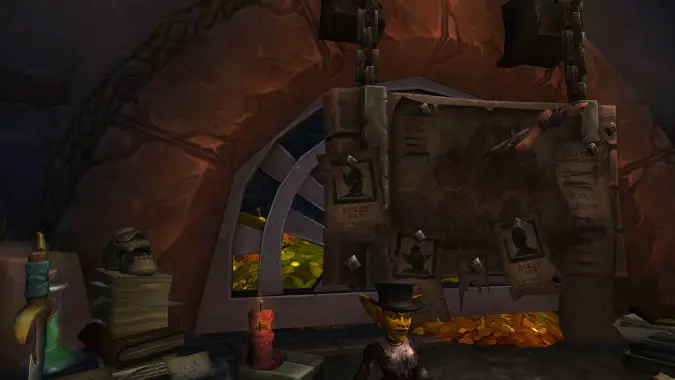
The Scouting Map in Legion was a class-flavored version of the classic
Name: Scouting Map
Location: Class Hall, Command Center in Deliverance Point in Broken Shore, WoW Legion Companion app
Resource: Order Resources
Number of Followers: Nine per Class Hall, plus one legendary shared by all
If there was ever a time to have 12 different alts in order to play each class, it was Legion. Each class Order Hall offered a different experience, a new story, and different followers to pal around with. Shortly after unlocking the Order Hall — which was required for progressing a character, obtaining the artifact weapon, and advancing that weapon — the Scouting Map was unlocked. In the beginning, there were eight champions that could be unlocked for each class hall to send on missions. However, only five of them could be active at any time, and a player would have to select which ones they wanted. Additionally, there were Troops, which had two to four charges of vitality — how many missions they could go on before they were expended — and then more would need to be recruited. Recruiting Troops, running missions, and researching upgrades for the Hall all cost Order Resources, Legion’s version of Garrison Resources.
There were two things these missions accomplished. First, they were tied into the Order Hall campaign. Parts of the story required completing a mission or two. These weren’t difficult, but they were a time gate — the Campaign couldn’t progress until these missions completed, sometimes taking a week to get through. But it was worth it, because reaching the end, leveling and gearing up followers, and going into the missions with all their rewards could be quite profitable.
The missions worked mostly the same way as WoD — there were enemies with their threats that had be countered. Certain Champions and Troops had certain traits that would counter better. Increase the percentage, wait out the time, collect the reward.
One major change that came in Legion was the bonus loot. The percentage didn’t stop at 100% — there was now a 200%. The first 100% was success or failure. Anything above that was a chance at an additional bonus reward, which was often the true goal of running the mission at all. One of the main threats that would have to countered was Cursed, which meant no bonus loot, and locking the chance at 100%. Legion also added the WoW Companion app, allowing players to perform different functions related to the Class Hall from mobile devices, so you could keep working the Scouting Map without having to sit down in front of your computer. Legion was a great source of gold compared to previous expansions anyway, but missions were an excellent way to really boost your income. Build up an army of alts, download the app, and rake in the gold with a few taps on your phone.
At this point, the Map was a surefire way to make tons of gold as long as you kept engaging with it. Plus, was so diverse for each class. Surely Blizzard wouldn’t do anything to change that.
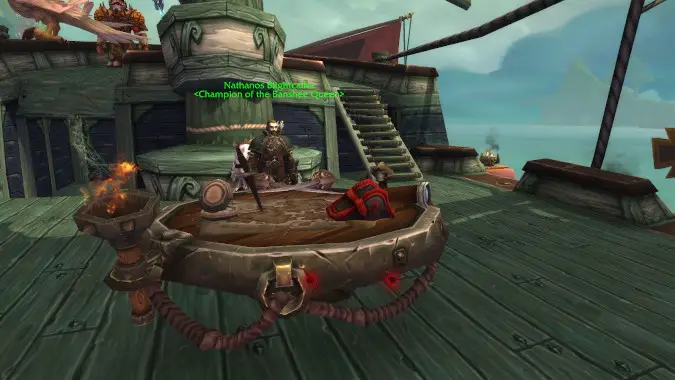
Mission tables in Battle for Azeroth were highly simplified
Name: Mission Table
Location: Banshee’s Wail at the Port of Zandalar (Horde), Wind’s Redemption at the Boralus Harbor (Alliance), WoW Companion app
Resource: War Resources
Number of Followers: Six per faction
Battle for Azeroth swapped out the Map and brought back a Table. This sat on a ship, conveniently located on a boat shortly outside the inn for the Alliance in Boralus Harbor, or all the way down south at the end of the map down three flights of stairs for the Horde in Zandalar. A lot of the gameplay was the same as before — percentage-based completion, bonus loot, followers, troops, and types of rewards that could be earned — but the system was simplified in BFA. There were a lot fewer followers — only five for each faction to start, and one added later. No need to choose or deactivate, they were all available for use. Followers didn’t level up — they started at level 120 and stayed there, only upgrading in quality from uncommon to epic, and later on to legendary. They didn’t require much XP to upgrade in quality, either, compared to previous expansions. There was no item level. Equipment just added extra bonuses, and there was more of a focus on extra rewards rather than success chance.
With a simplified system came simplified rewards. War resources, Azerite, Polished Pet Charms, and reputation were on offer. While gold was a reward, compared to what had been offered in Legion, it was a drop in the bucket. Another issue was Troops. They were no longer a static type, but instead came with a random type — Ranged, Melee, or Mounted. It was possible to have Troops, but not the kind needed for a mission you wanted to run, and training more might still not create the ones needed. Then there are a whole series of missions that told a story, lore related to the war that was going on this time. Completing those missions awarded achievements. More importantly, reading the text of the achievements tells the story of what the Horde and Alliance are doing — their movement across the continents, and the battles that occurred after the burning of Teldrassil. This was some of the most needed story in BFA, and it was extremely easy to miss.
Overall, the mission table in BFA was lackluster. Seemed to be a downgrade in complexity, diversity, and rewards compared to the previous expansion. Was this a sign Blizzard was going to phase it out? No, they were ready to reinvent it.
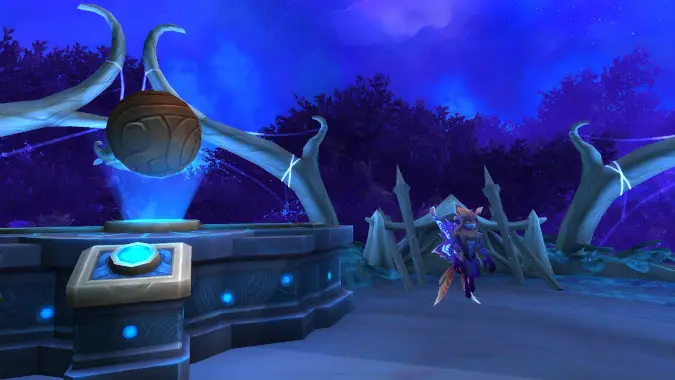
Covenant Adventures in Shadowlands added new gameplay (which people used addons to avoid)
Name: Covenant Adventures
Location: Covenant Sanctum, WoW Mobile Companion app
Resource: Reservoir Anima, Redeemed Soul (to unlock and upgrade)
Number of Followers: 20 per covenant, 2 shared by all
After the simplicity of BFA, Shadowlands took the Table and kicked it up a notch, adding a lot of complexity to the gameplay aspect of the feature. Now it was a form of battle chess. Rather than previous expansions’ bare success/fail action, players could watch their followers do battle. The followers and the enemies played out the action, attacking in order with a log of what happened, with the idea that players could see how it could have played differently and adjust their strategies going forward. It wasn’t just a matter of what Companions and troops were put on the mission, but placement within the playing field also impacted success. Gone was the percent chance of success. Now there was a health pool and attack power of each side, and ensuring your side was greater than the other side was the way to estimate that victory was likely. Companions began at level one, and must go through the process of earning XP to level up to 60, an arduous journey. Troops were also level one in the beginning, but are a sort of average level of the Companions — obtaining new, low level Companions could bring down the average level, sometimes making it feel bad to find fresh recruits.
Early in the expansion, part of the issue was imbalance between the Covenants. The Companions and Troops were not identical in each Covenant, and had different strengths and weaknesses. However, the weaknesses of the followers in Kyrian and Venthyr were not overcome by any strengths they may have had, and there was a bug that made Night Fae Troops exceptionally strong. Over time, fixes went in to help even everything out, but it still felt Necrolord had the strongest Companions. Addons like Venture Plan were made to help with the process — put on one Companion, click a button, and it autocompleted the setup.
Shadowlands began with quite a few Companions per Covenant — three that were Soulbinds, coming from going through the Covenant Campaign. Six came from renown unlocks, which was just a matter of doing the weekly chores. And then eight more came from Torghast — two of them neutral and shared by all. That was 17 companions per Covenant, 15 unique for each, for four Covenants. Then, patch 9.1 added three more per Covenant per Renown pathway, and two more for each Covenant for Torghast.
As far the rewards, Shadowlands had its fair share of mounts and pets, and there was still the typical offering of an expansion currency — Anima this time — gold, and Polished Pet Charms. The gold was certainly better than BFA, but not as lucrative as Legion. The rewards didn’t really revive the system, and the battle chess gameplay feature didn’t make as much of a difference as some might have thought.
And so, the land of the dead was where this four-expansion system found its end. May it rest in peace.
Please consider supporting our Patreon!
Join the Discussion
Blizzard Watch is a safe space for all readers. By leaving comments on this site you agree to follow our commenting and community guidelines.




